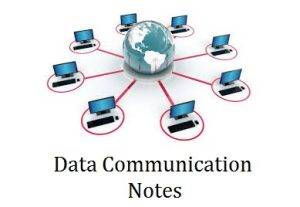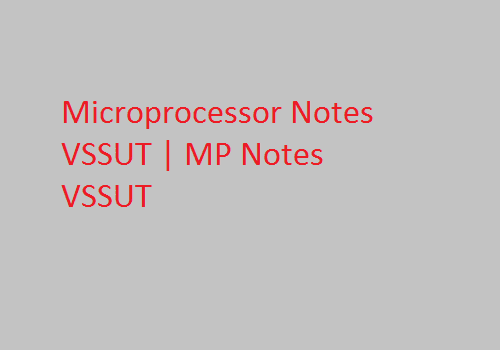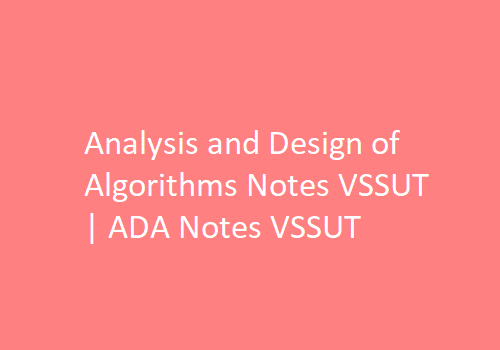Here you can download the free lecture Notes of Data Communication Pdf Notes – DC Notes Pdf materials with multiple file links to download. The Data Communication Notes pdf (data communication lecture notes) book starts with the topics covering Model of Digital Communication Systems, PCM Generation and Reconstruction, Introduction, ASK,ASK Modulator, Pulse shaping for optimum transmissions, Information and entropy, conditional entropy and redundancy, Matrix description of Linear Block Codes, Decoding using State, Etc.

Data Communication Pdf Notes – DC notes pdf file
Complete Notes
Link: Complete Notes
Note :- These notes are according to the R09 Syllabus book of JNTU. In R13 and R15, 8-units of R09 syllabus are combined into 5-units in R13 and R15 syllabus. If you have any doubts please refer to the JNTU Syllabus Book.
Topics covered in data communication lecture notes
Unit-I
Elements of Digital Communication Systems: Model of Digital Communication Systems. Digital Representation of Analog Signal, Certain issues in Digital Transmission. Advantages of Digital Communication Systems, Bandwidth-SIN tradeoff. Hartley Shanon Law, Sampling Theorem
Unit-II
Pulse Code Modulation: PCM Generation and Reconstruction, Quantization noise, Non uniform Quantization and Companding, DPCM, Adaptive DPCM. DM and Adaptive DM, Noise in PCM and DM.
Unit-III
Digital Modulation Techniques: Introduction, ASK,ASK Modulator. Coherent ASK Detector, No n-Coherent ASK Detector, PSK, Bandwidth and Frequency Spectrum of FSK. Non coherent FSK Detector, Coherent FSK Detector, PSK Detection Using PLL, BPSK, Coherent PSK Detection. QPSK, Differential PSK.
Uni-IV
Baseband transmission and Optimal Reception of Digital Signal: Pulse shaping for optimum transmissions, ABaseband Signal Receiver, Probability of Error, Optimum Receiver, optimal of Coherent Reception, Signal Space Representation and Probability of Error, eye diagrams, Cross talk.
Data Communication Notes pdf – DC Notes Pdf
Unit-V
Information Theory: Information and entropy, conditional entropy and redundancy, Shannon Fano coding, Mutual Information, information loss due to noise, source codings – Huffman Code, variable length coding, Source coding to Increase average lnfomtation per bit, Lossy source coding.
Unit-VI
Linear Block Codes: Matrix description of Linear Block Codes. Error detection and error Correction capabilities of linear block codes. CyDecoding.
Unit VII
Convolution Codes: Encoding. Decoding using State, tree and trellis diagrams, Decoding using Viterbi algorithm, Comparison of Error Rates in Coded and Uncoded Transmission.
Unit-VIII
Spread Spectrum Modulation: Use of Spread Spectrum, Direct Sequence Spread Spectrurn(DSSS), Code Division Multiple Access, Ranging using DSSS. Frequency Hopping Spread Spectrum, PN – sequences: Generation . and Characteristics. Synchronization in Spread Spectrum Systems and for more please download the above PDF file.
Reference:
Text books:
1. Introduction to Data Communications and Networking, Wayne Tomasi, Pearson Education.
Follow us on Facebook and Support us with your Like
Frequently Asked Questions
Q1: What is computer network and how are they classified?
A1: Computer network is a system of interconnected computers and computerized peripherals like printers. This interconnection among the computers makes it possible for the information to share among them. Information will be shared through this medium and thus the data is communicated. The communication happens either by wired or wireless media. These networks are classified based on the following factors
- Inter connectivity
- Architecture
- Administration
- Geographical span
Q2: What are the network applications?
A2: To form a network, Computer systems and peripherals are connected with each other. Some of the advantages or application are,
- Instant messaging
- IP phones
- Exchange of information by means of emails and FTP
- Video conferences
- Parallel computing
- Resource sharing such as printers and storage devices
- Information sharing
Q3: What is Personal Area Network?
A3: Smallest network that is very personal to user is called A Personal Area Network (PAN) which may include Bluetooth enabled devices or infra-red enabled devices. This network has approximately 10 meters of connectivity range. It may include wireless mouse, keyboard, printers, bluetooth etc.
Q4: What is ethernet?
A4: Invented by Bob Metcalfe and D R Boggs in 1970, it is deployed Local Area Network (LAN) technology which shared media. Network using shared media has high chances of data collision. Using collision detection technology or carrier sens multi access, ethernet detects collision. All the hosts roll back on the occurrence of collision in Ethernet. Later, wait for some amount of time and re transmit the data. It is equipped with 48-bits MAC (a network interface card) addressing other Ethernet devices to identify and communicate with remote devices in Ethernet. Traditional Ethernet utilizes 10BASE-T specifications. The specification are as follows,
- 10 indicates 10 MBPS speed
- BASE means for baseband, and
- T stands for Thick Ethernet


